Slack
We understand that most of your work happens over Slack. You can integrate Squadcast and Slack to collaborate efficiently with your team while working on incidents. Here’s a brief of all that is possible.
You can review Squadcast’s Privacy Policy here.
Prerequisites
- Only the Account Owner and Users with the
Manage Extensionspermission will be able to enable, disable and manage Extensions in Squadcast
Slack Notifications for Incidents
Squadcast sends a notification to the configured Slack Channel as soon as an incident is triggered. You can easily Acknowledge, Resolve and Reassign the populated incidents from within the Slack Channel itself.
The email address used with your user in Slack and your user in Squadcast should be the same, if not, the integration will not work as expected.
Follow the steps below to integrate Squadcast and Slack
(1) navigate to Settings and select the Extensions tab from the left navigation sidebar
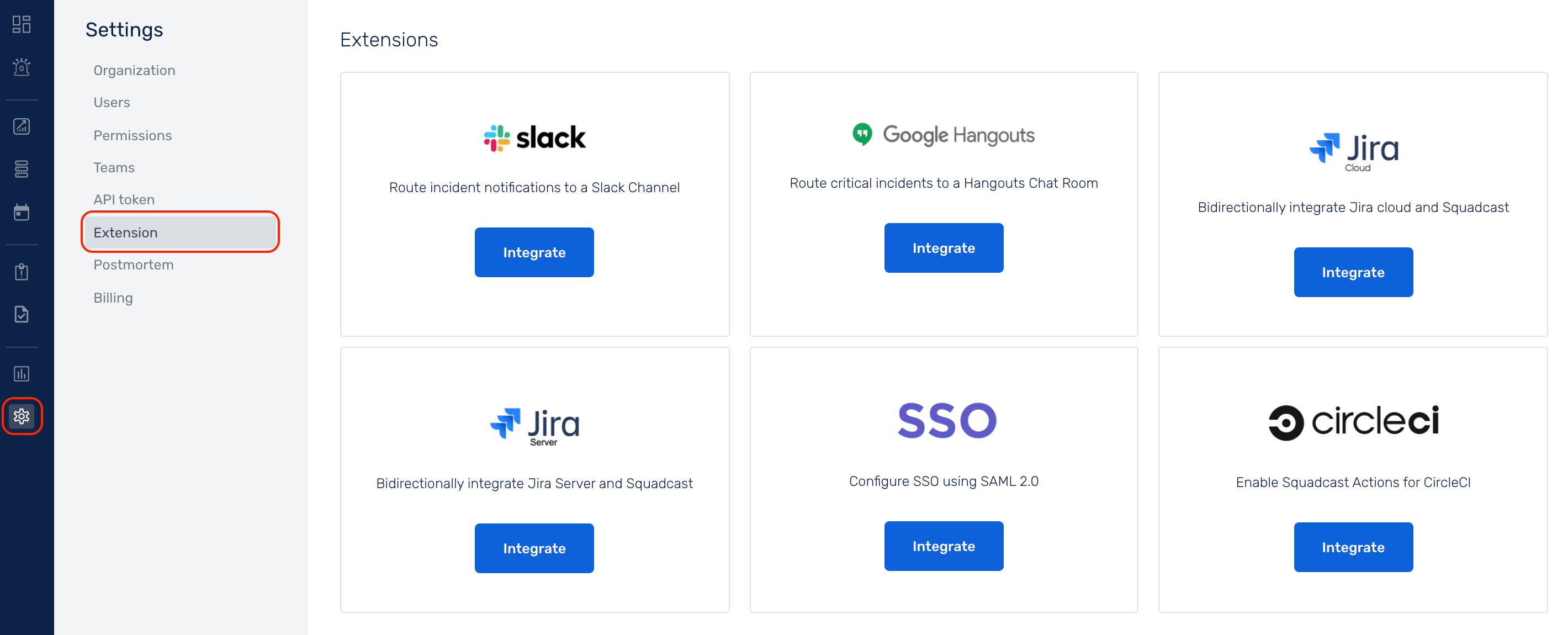
(2) Click on the Integrate button on the Slack tile
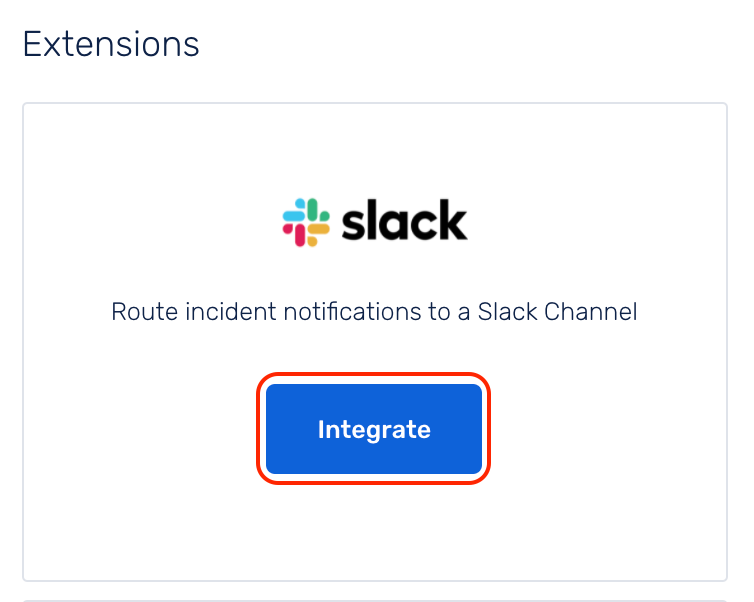
(3) Now, click on Continue
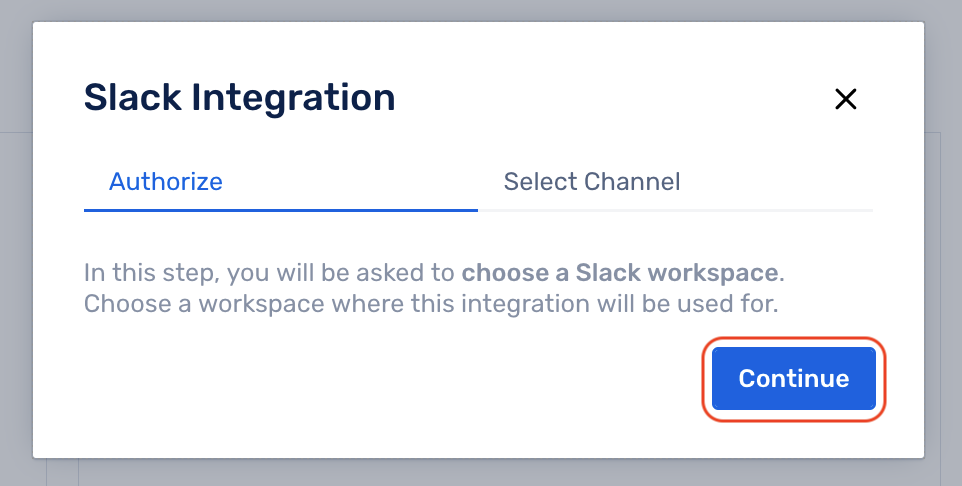
(4) You will be redirected to Slack for approval of certain permissions that Squadcast would need for this integration. First select the Slack Workspace that you wish to integrate with your Squadcast account and then, click on Allow
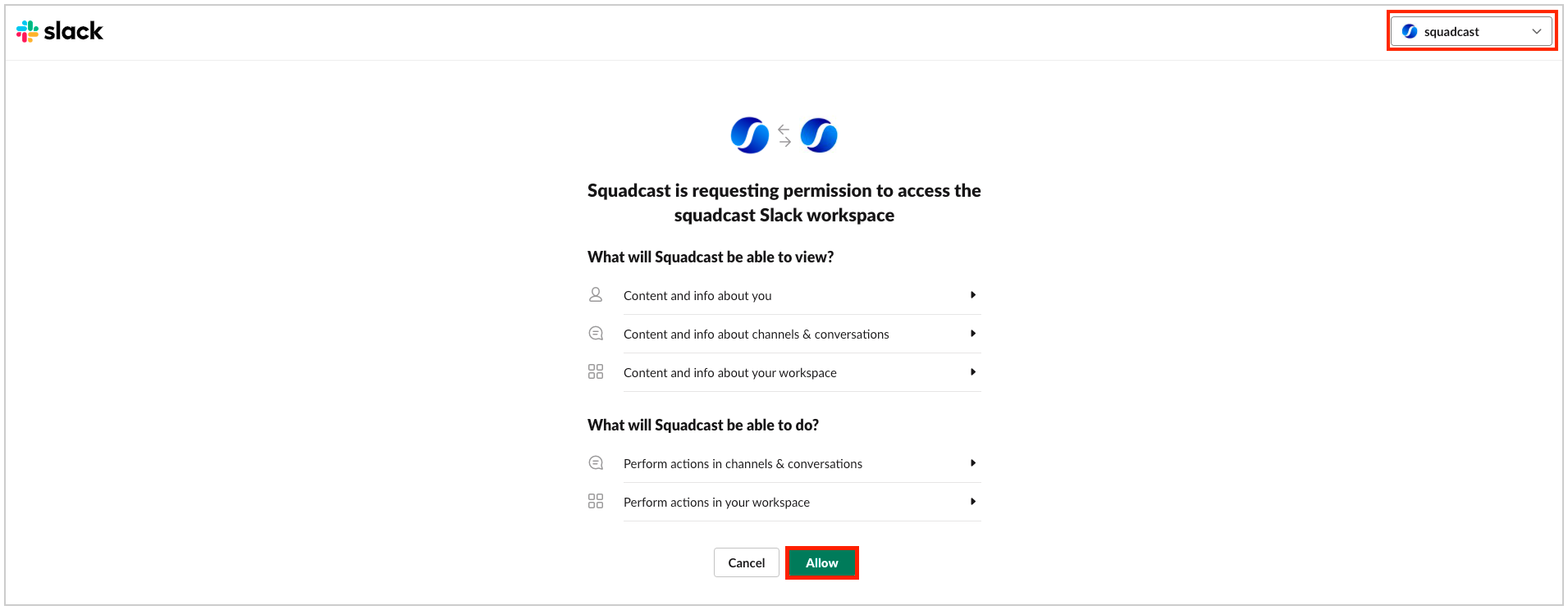
(5) Next, you will be asked to select a Slack Channel that would be the default Slack Channel for all your Squadcast Services
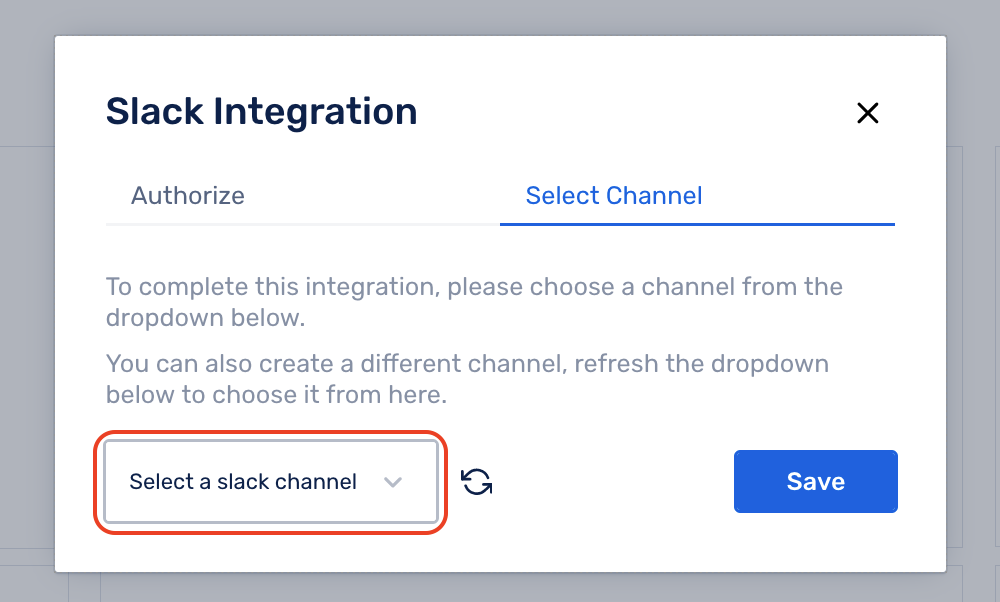
(6) You can either select an existing Channel from the dropdown or create a new Channel in Slack. If you have added a new Channel and don’t see the same in the dropdown, refresh the dropdown and it would appear. Once you have selected the Channel, click on Save
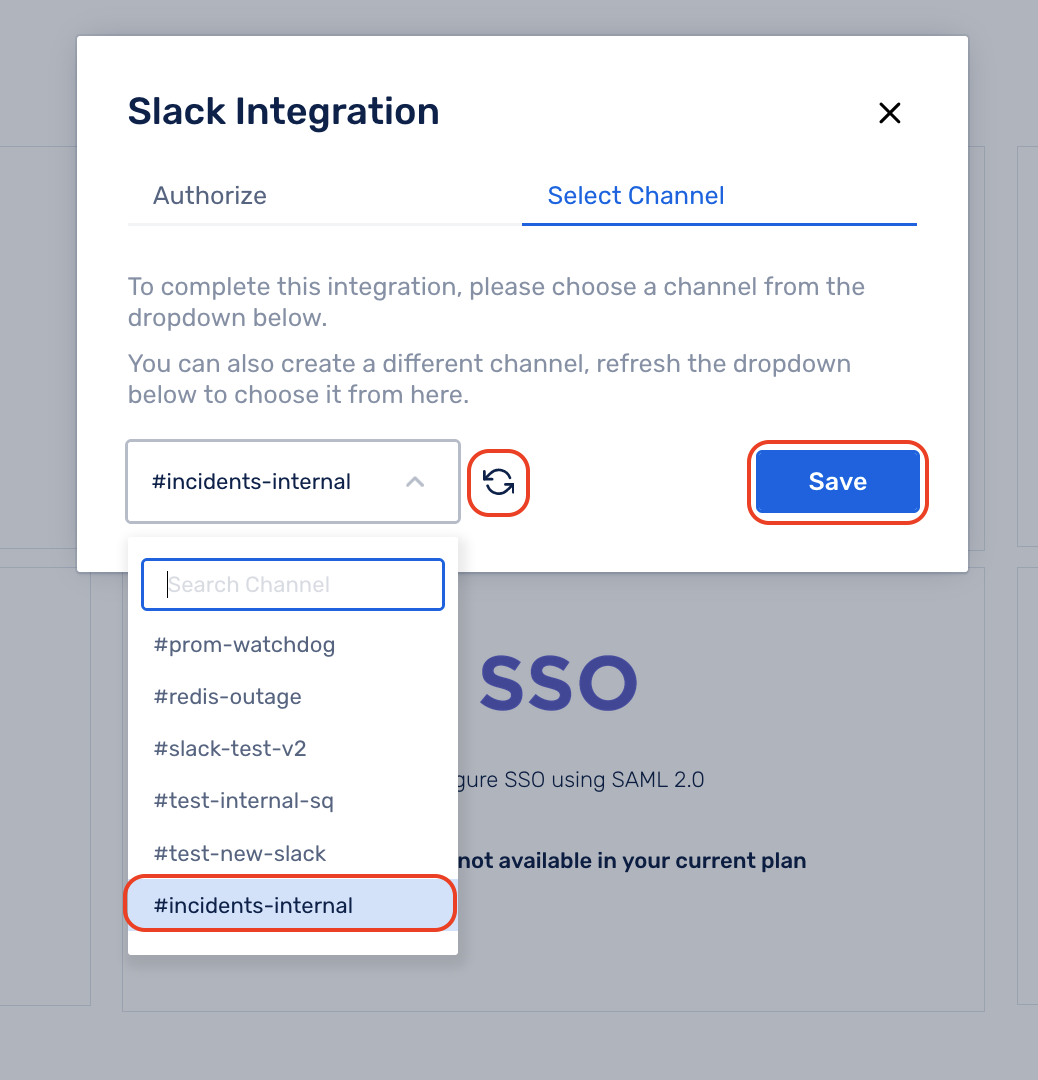
By default, all the Public Slack Channels and the Private Slack Channels in which the Squadcast Bot is added in your Slack Workspace would be listed in the dropdown. If you do not see the Channel of your choice listed in the dropdown, then:
- Head over to your Slack Workspace
- Open the Channel that should have been present in the integration dropdown
- In this Channel, call the Squadcast Bot by using @squadcast
- Back in Squadcast, click on the Refresh button beside the Channel dropdown to refresh the list. Your Channel should be populated in the list now
This completes the integration process between Squadcast and Slack. You can verify the same with the presence of the Integrated banner on the Slack tile as well as the selected Channel mentioned on the Slack tile
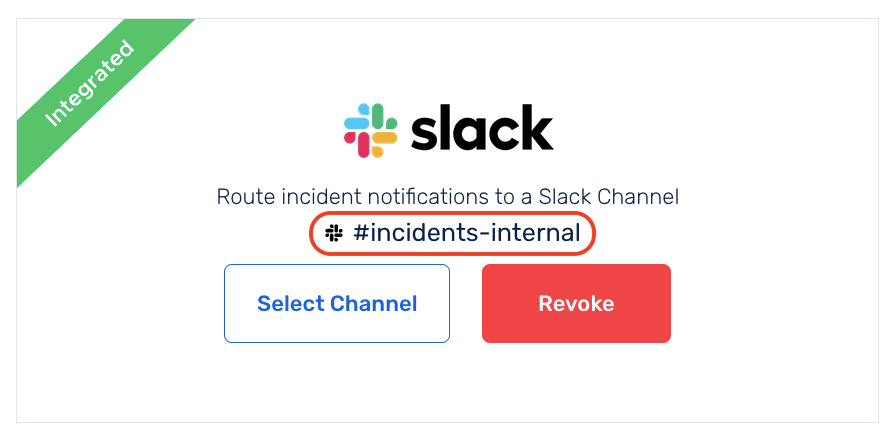
You can simply click on Revoke to remove the configured Slack integration at any given time
Creating Slack Channel for Incidents
To create a Slack Channel for an Incident,
(1) Navigate to the Incident Details page, and click on the + icon or + Add Link button
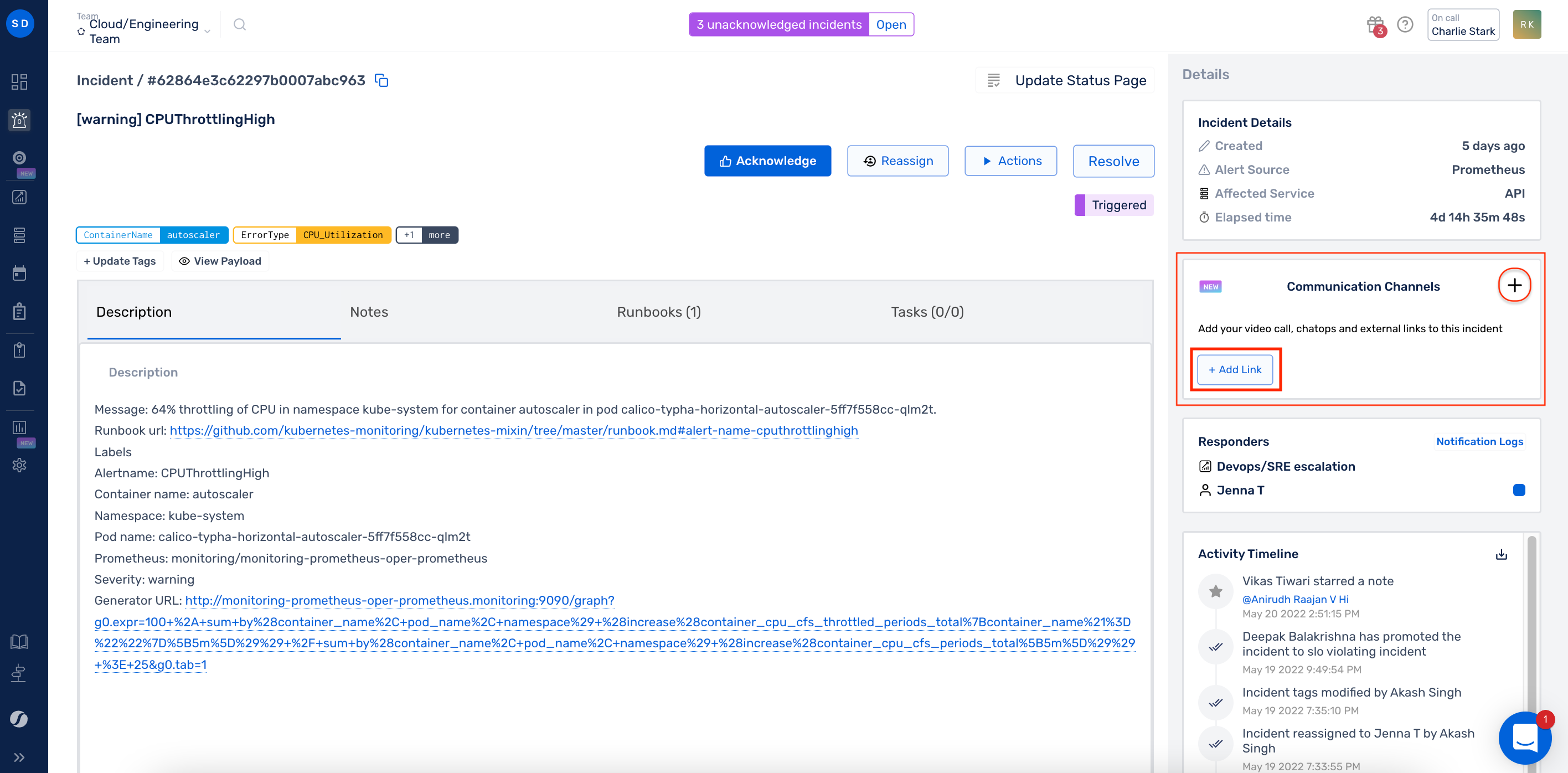
(2) Click on the Create Slack Channel option from the menu
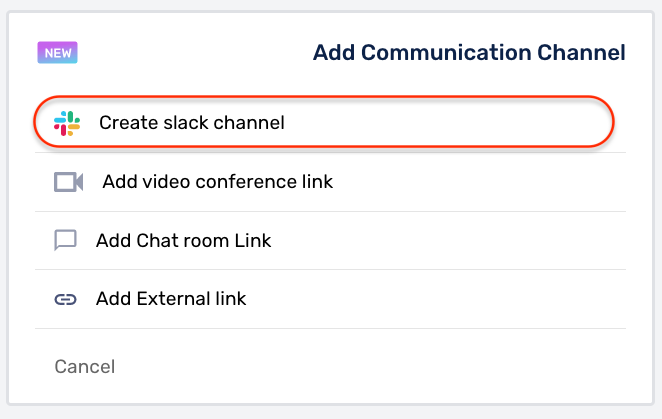
(3) Type in the Channel Name for your Incident and click Save
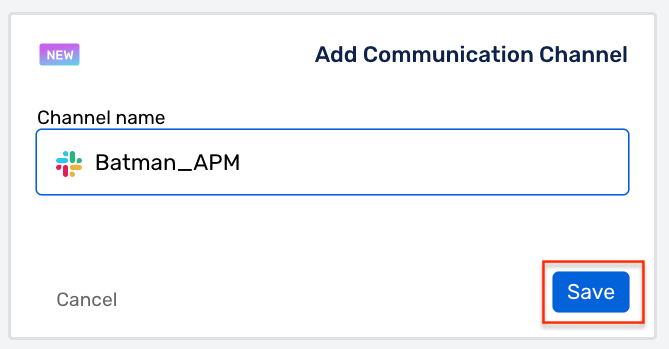
This will generate a dedicated Slack Channel for your Incident.
Note
All notifications of this specific incident like, Acknowledged, Re-assigned, Resolved will be sent to this channel in addition to the regular channel (if configured).
Note
Once the Incident is resolved, you can archive the Slack Channel using the Archive button on the right.

Updating the global Slack Channel for all Services in Squadcast
(1) Click on Select Channel
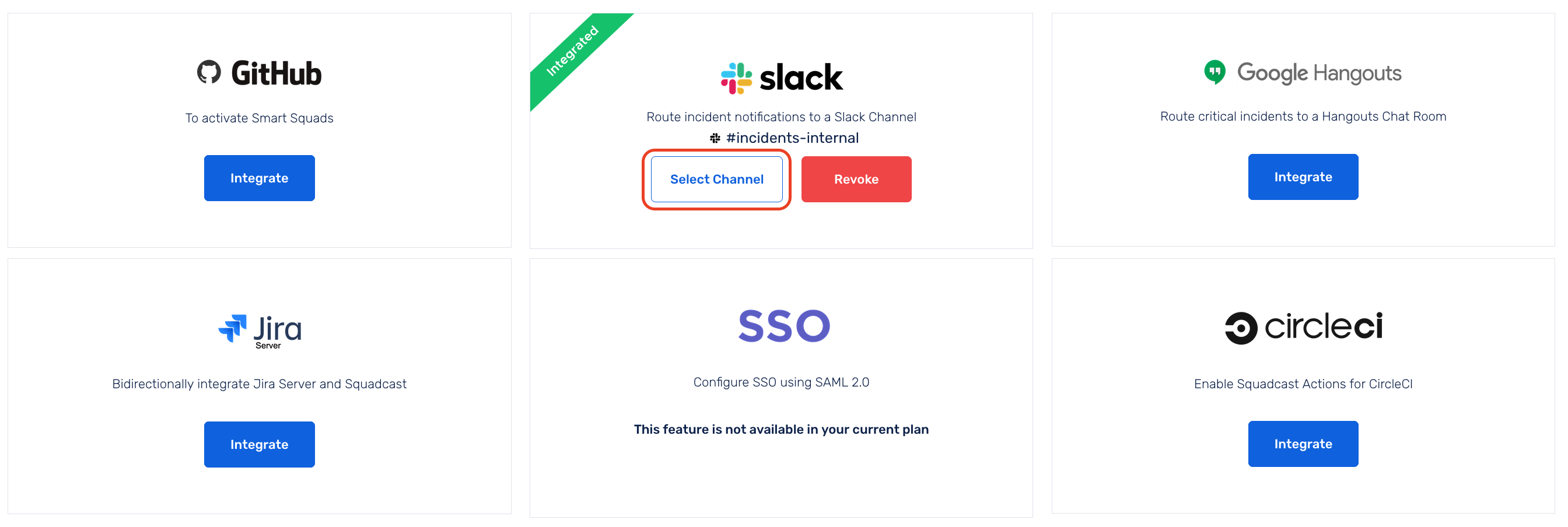
(2) Select the new Slack Channel that would be the default Slack Channel for all your Squadcast Services

(3) Click on Save
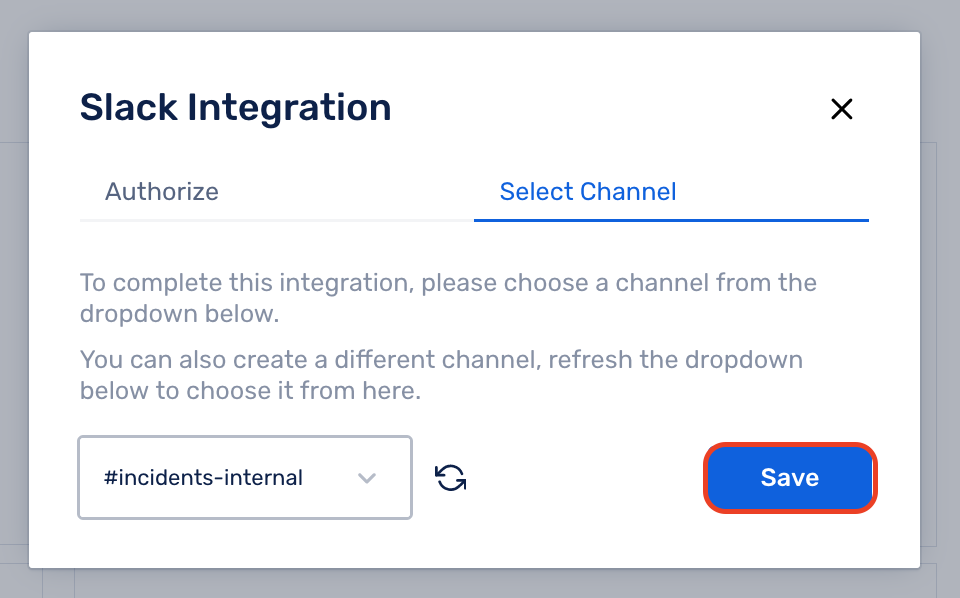
Now, you will start receiving alert notifications for all Squadcast incidents in the configured Slack Channel, in this case, the incidents-internal Channel. You can then choose to Acknowledge, Resolve and Reassign these incidents from within the Channel, in this case, the incidents-internal Channel.
This integration supports bi-directional status sync
When an incident is acknowledged, resolved or reassigned from Slack, the status change of the incident is propagated to Squadcast and updated automatically. Similarly, if an incident is acknowledged, resolved or reassigned in Squadcast, you will be notified in the configured Slack Channel for it.

Note: If an incident is auto-resolved by the alert-source, then the notification indicates the same.

By default, the configured global Slack Channel is applicable to every Service in Squadcast. This means, all the alerts coming for every Service in Squadcast will be routed to the default Slack Channel configured
Configuring Service Specific Slack Channels
Additionally, you can associate one Slack Channel per Service so as to receive notifications for incidents affecting only that Service in this Slack Channel.
Follow the steps below to configure the same:
(1) From the sidebar, navigate to Services

(2) Click on the three horizontal dots for the Service of your choice
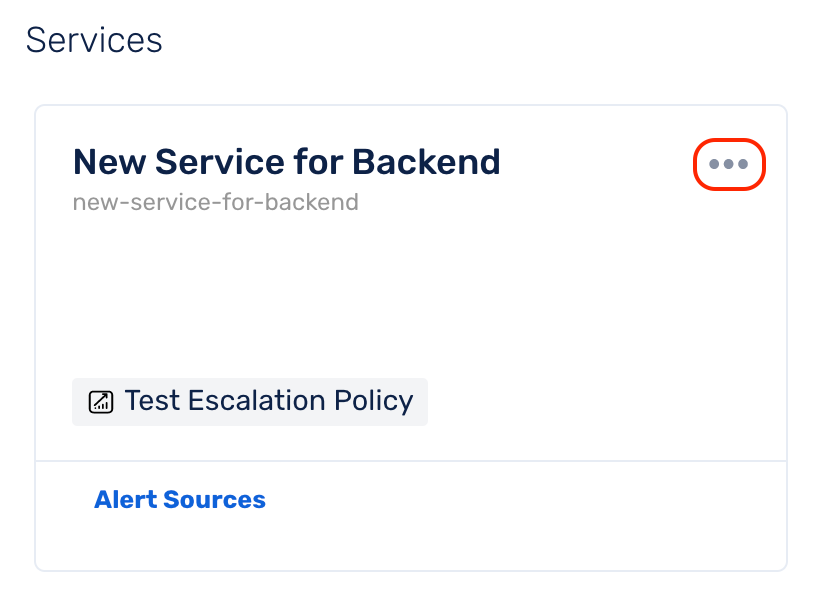
(3) Select Slack Channel
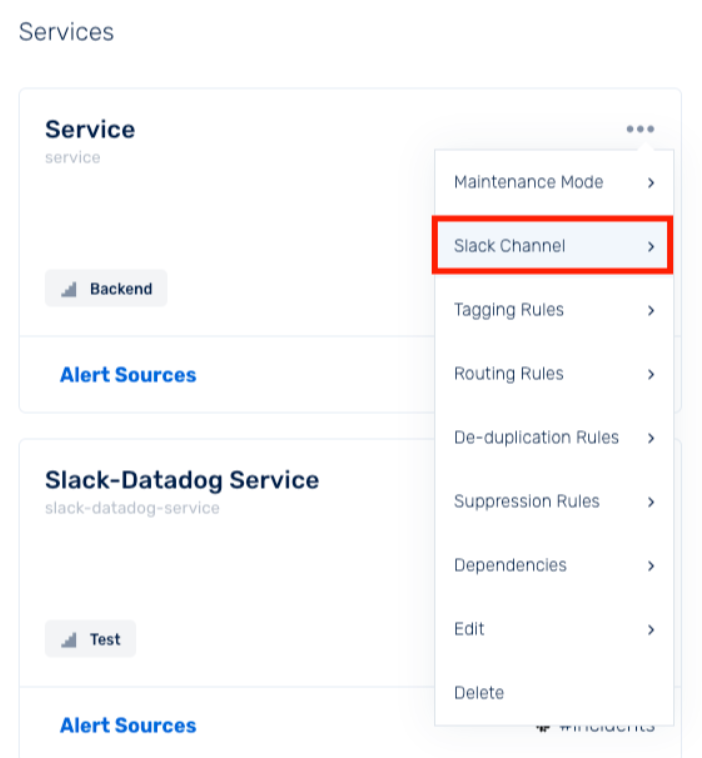
(4) By default, the configured global Slack Channel is populated. Now, select a Channel from the drop-down to which incident notifications should be sent for this Service and click on save
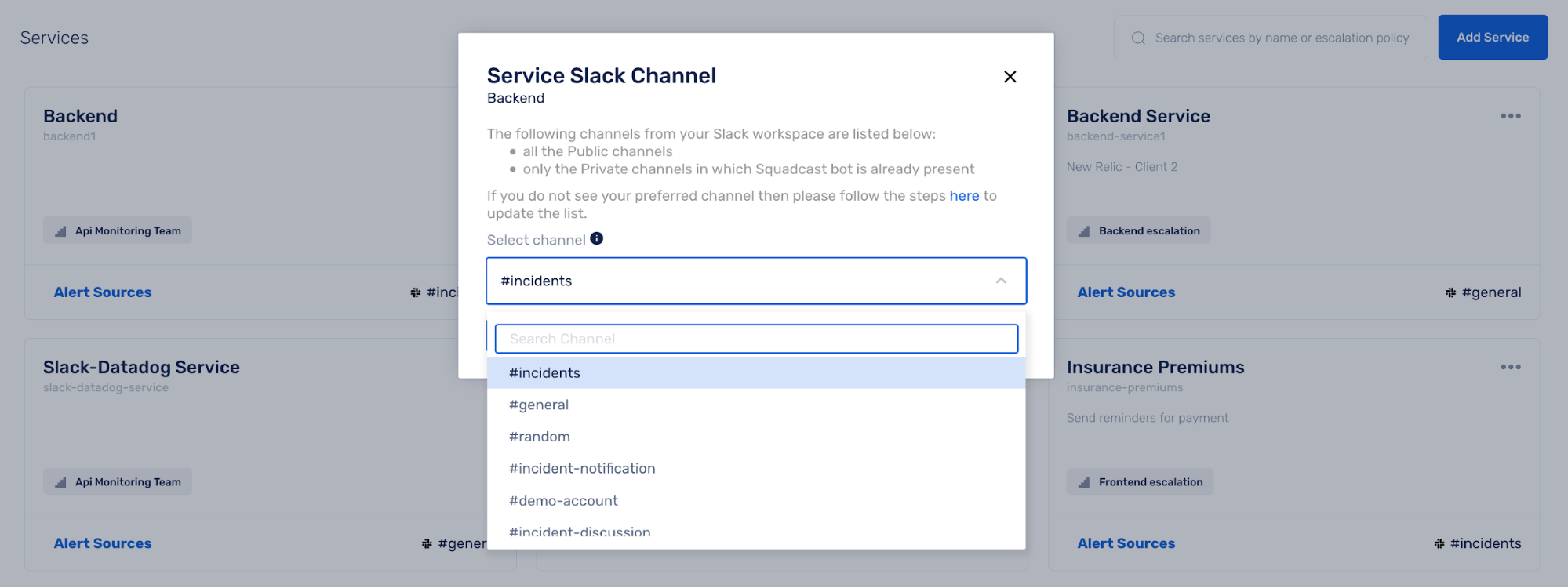
By default all the Public Channels and only the Private Channels in which Squadcast bot is already called in your Slack workspace would be listed in Squadcast. If you do not see your Channel in the list, then:
- Move to your Slack Workspace
- Open the Channel that you wish to map in Squadcast
- Call Squadcast by using @squadcast
- Now, map the Channel in Squadcast under the Service of your choice
(5) Save the configuration
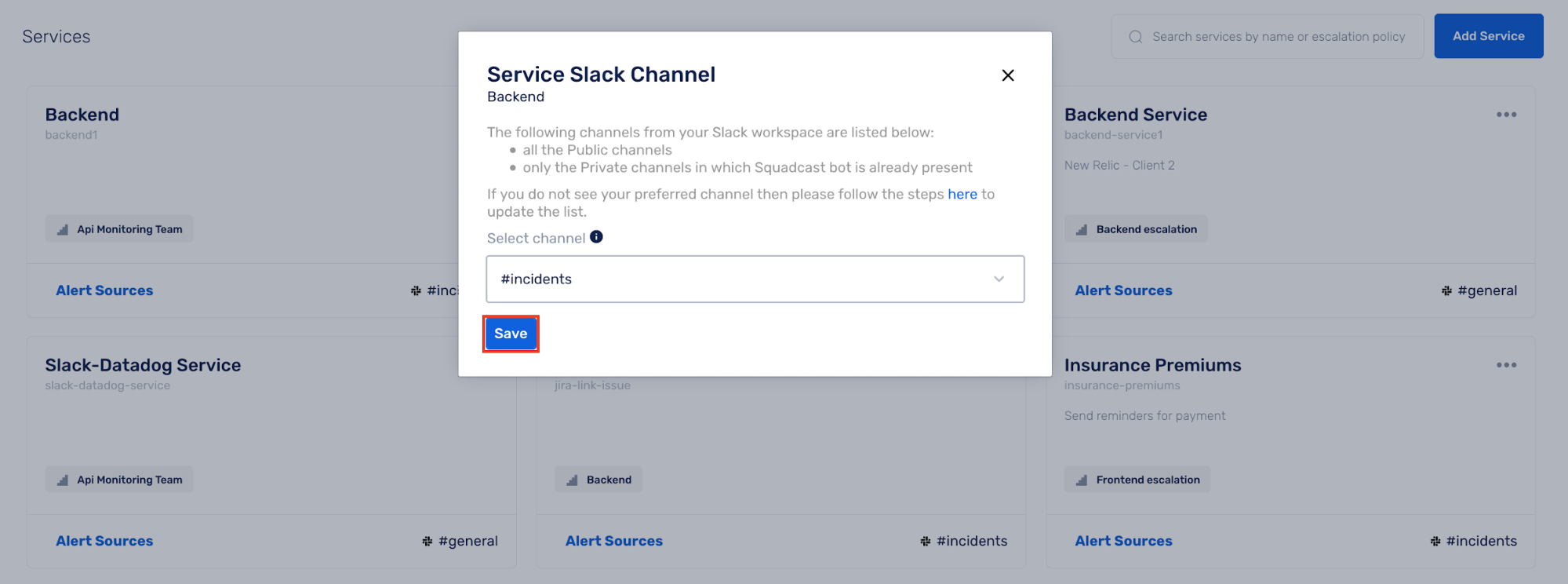
You will be able to see the associated Slack Channel on the bottom-right corner of the Service tile.
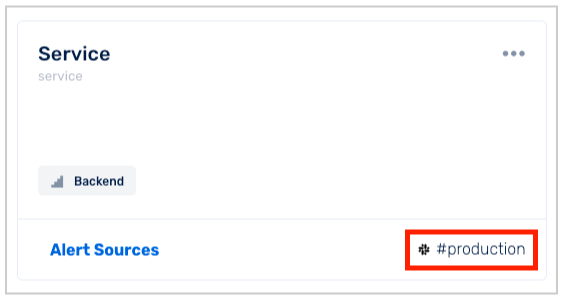
Triggering Incidents from Slack
You can trigger incidents in Squadcast directly from a Slack Channel.
(1) To trigger an incident from Slack, within the Slack Channel, type /create_incident and select the first option as seen in the screenshot
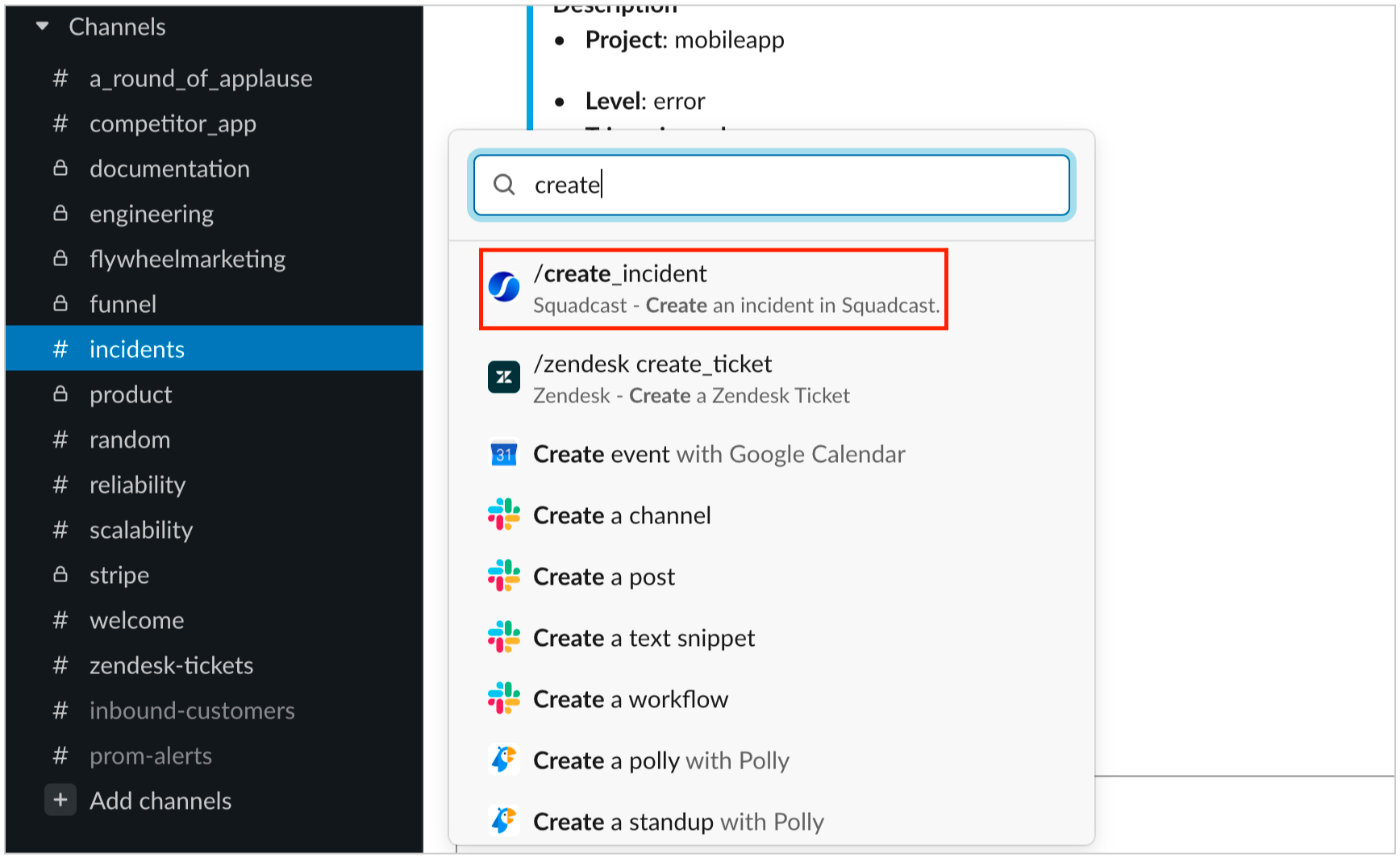
(2) In the pop-up:
(a) Pick the Service for which you want to trigger the incident
(b) Give the incident a meaningful title
(c) Provide informative description if needed
Click on Create to trigger the incident
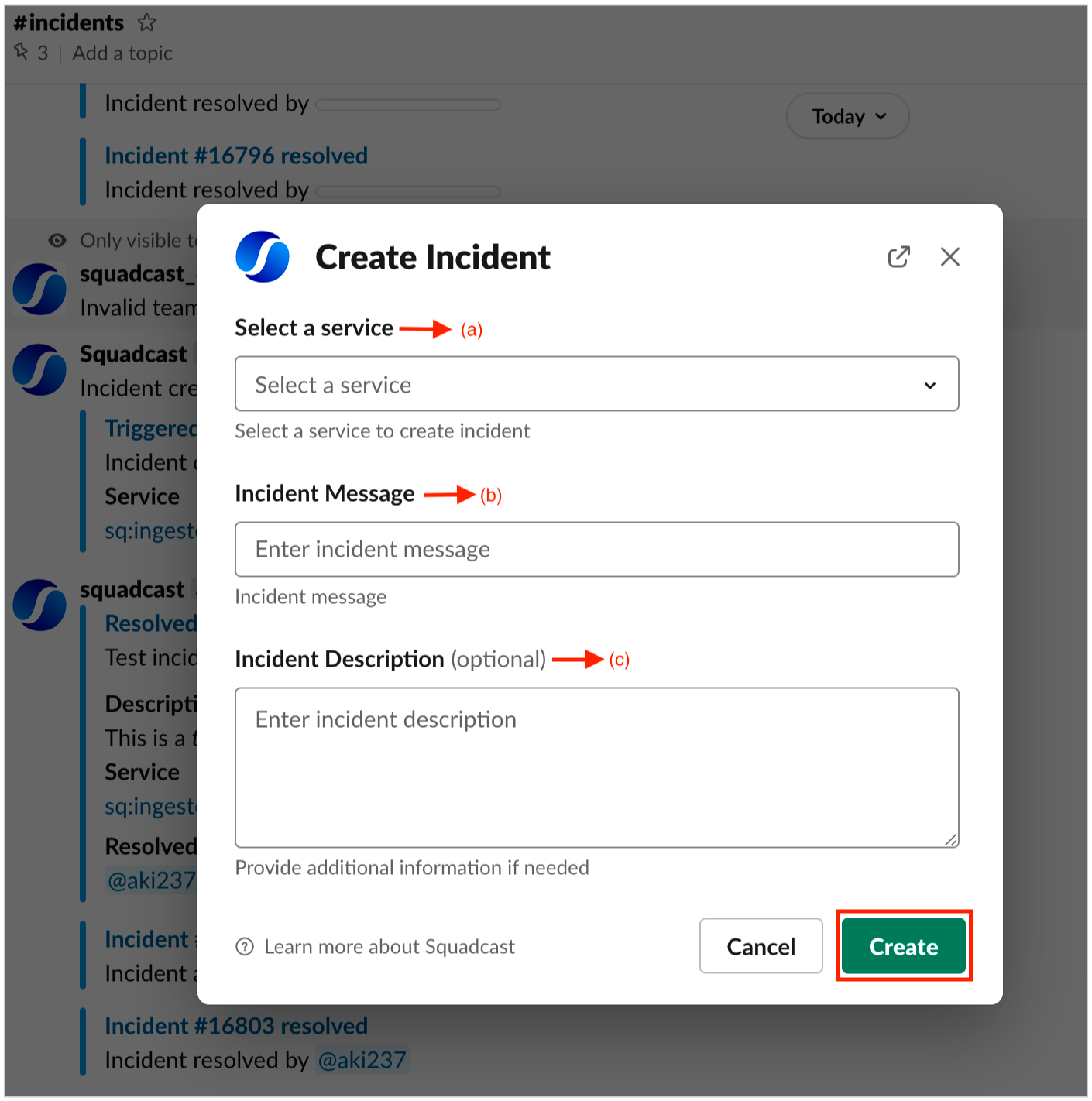
(3) You will now be able to see the newly triggered incident in Squadcast. You will also be notified in the globally configured or the Service specific Slack Channel for the same
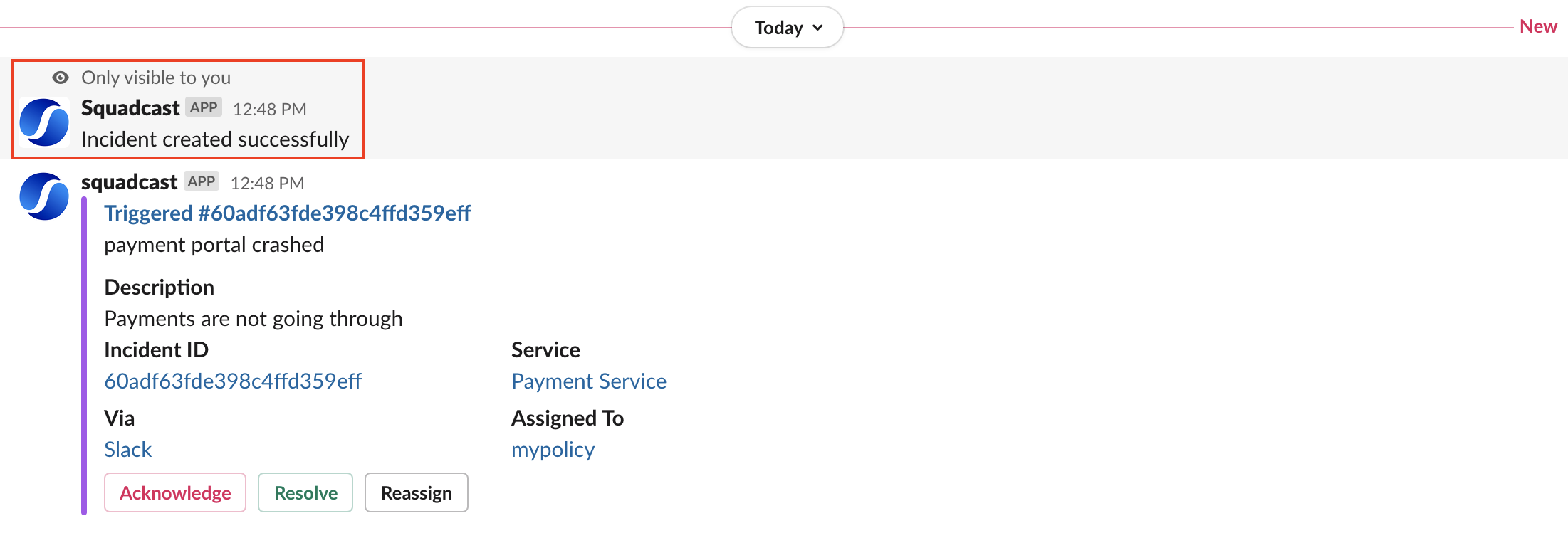
First, within the private Slack Channel, add the Squadcast bot. You can do so by executing the command - @squadcast. Once this is done, in Squadcast, you can map that particular Channel to the Service of your choice.
You will be able to view tags (if present) associated with an incident in the incident notification that you receive within the Slack Channel
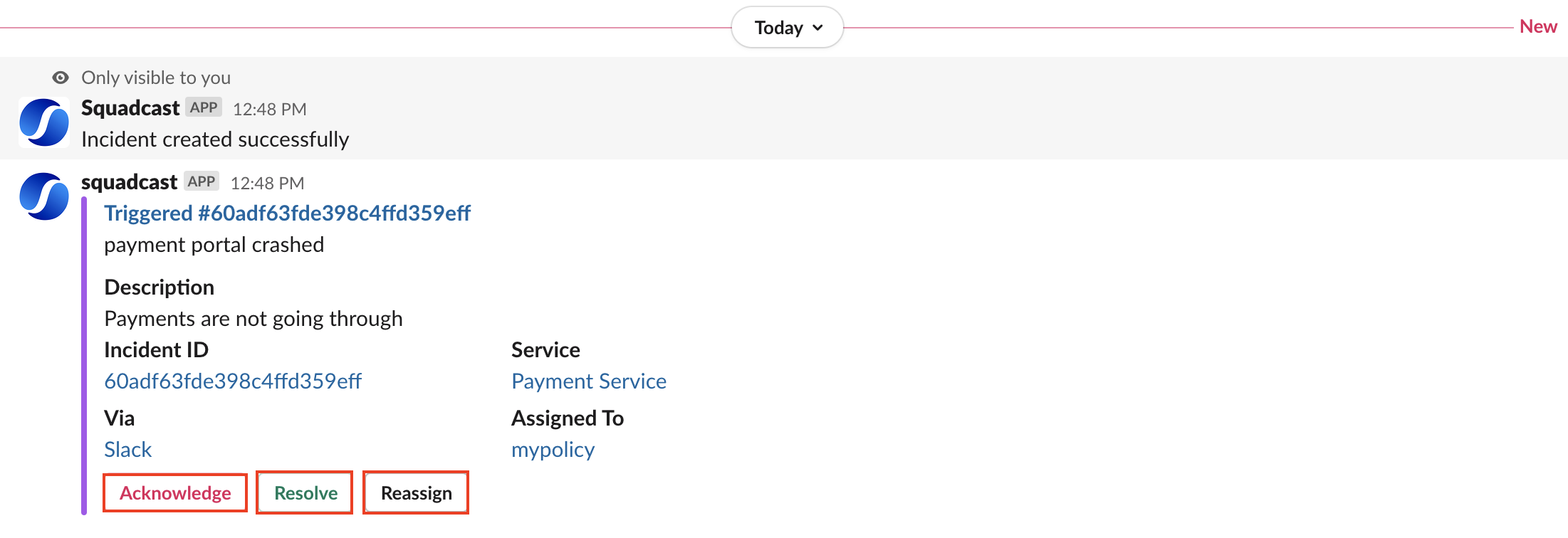
Using Slack as an Alert Source
To create incidents automatically in Squadcast from Slack, check out Slack as an alert source.
FAQs
-
How can a user in Slack be given access to add Public Channels?
Please follow the documentation by Slack to give access to your user to create Public Channels.
-
Our Squadcast Organization is integrated with our Slack account. However, we see
error messagessuch as the ones below. What do they mean?
-
You have not linked your Slack account with your Squadcast account.
This error message simply means that you are not added as a user of your Squadcast Organization. One needs to be added as a user in their Squadcast Organization to be able to take actions on incidents from Slack. Additionally, your Slack user Email and Squadcast user Email must be the exact same.
-
You are not a part of this Organization on Squadcast. Please contact your Admin.
This error message simply means that you are a user of Squadcast for an Organization that is not the same as the one that the incident in Slack is for. One needs to be added as a user of all those Squadcast Organizations in order to take actions on incidents of those particular Organizations. Please contact an Admin of your Team and have them add you as a user of the right Squadcast Organization.
-
You are a part of this Organization as a Stakeholder. You cannot take actions on incidents. Please contact your Admin to upgrade your role.
Stakeholders in Squadcast have read-only access to the platform. As a
Stakeholder, one will not be able to take any actions on the incidents. To be able to take actions on incidents, you must be added as aUseror anAdmin. Please contact an Admin of your Team and have your User Type changed from Stakeholder toUseror with the right User Permissions.